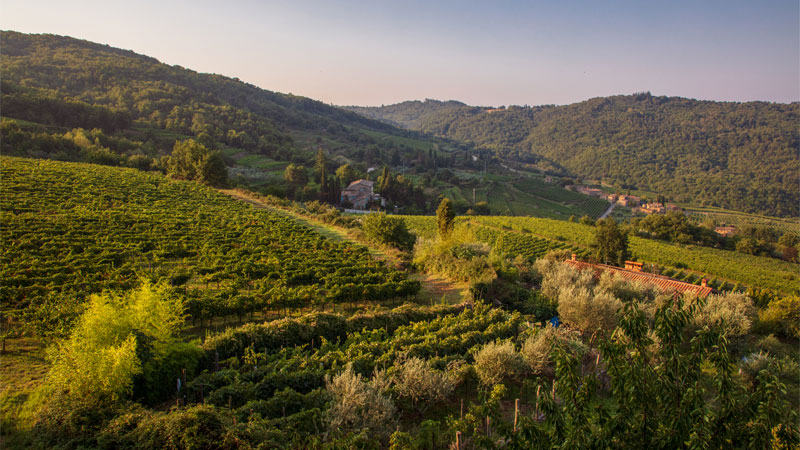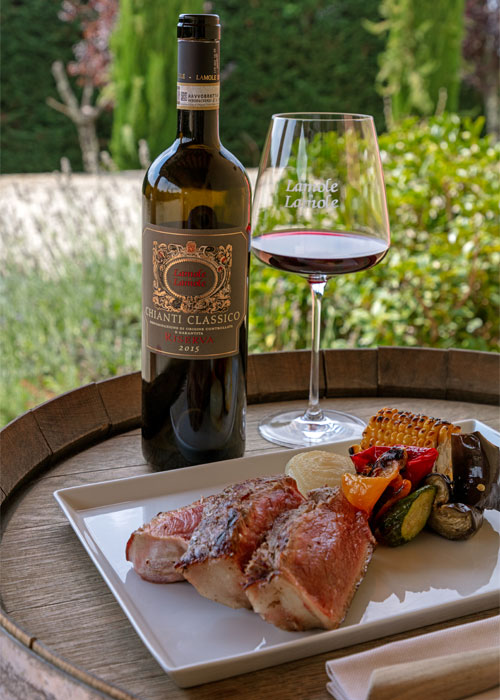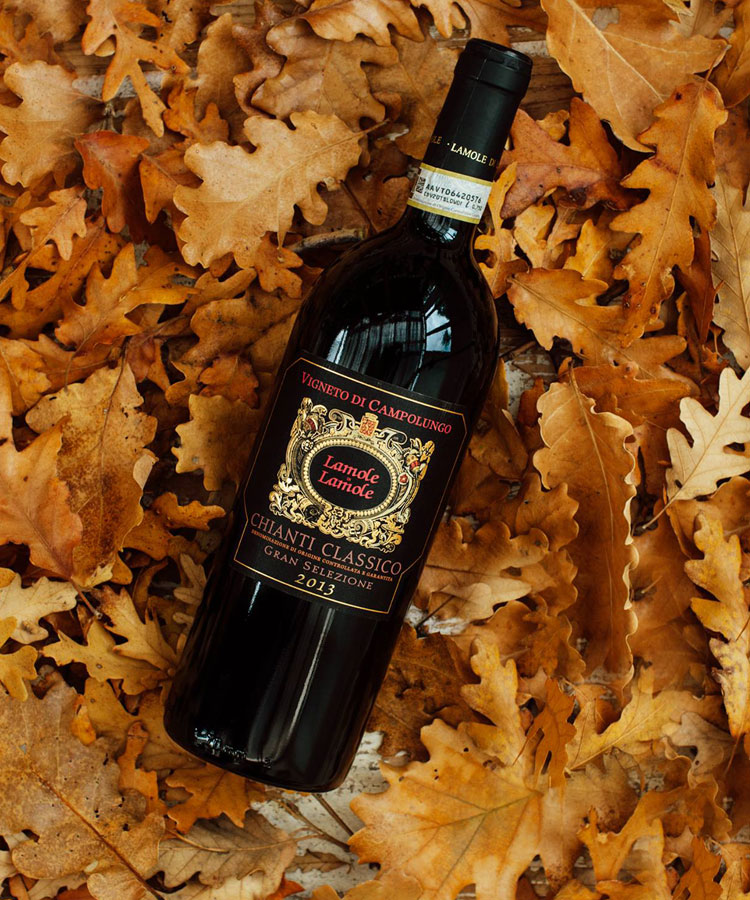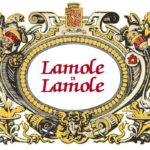
This article and the Visions of Italy series is sponsored by Santa Margherita USA.
Stretched between the Tuscan cities of Siena and Florence, Chianti Classico is a land of gentle, rolling hills covered in vineyards and olive groves. When summer’s heat loosens its grip and cool, crisp air filters in, the dazzling colors of fall — in every variety of orange, red and yellow, silvery greens, deep maroons, and dark shades of wood — take over the landscape. Not only is this the season of harvest, but it’s the season when the wines of Chianti Classico find their ideal moment at the table.
Plenty of sommeliers and at-home wine-pairers hew to the idea of “what grows together goes together,” but in few other places does the earth explode with such a preponderance of ideally-suited flavors all at once as in Chianti Classico. Here, the grape harvest coincides with the olive harvest, followed in succession by truffle and porcini and chestnut season, with small towns throughout the region celebrating each new arrival with festivals and parties. The wines of Chianti Classico reflect the aromas and flavors of the region, complementing the cuisine with vivid red fruit, spice, and signature flavors of earth and leaves.
The town of Greve in Chianti is surrounded by a number of little hamlets, including the renowned Lamole, which sits in a valley and is the home of Lamole di Lamole winery. The winery’s orientation benefits from a unique microclimate and the grapes there, primarily Sangiovese, produce outstanding Chianti Classico wines.

A long, rich winemaking history exists at Lamole di Lamole. The Romans first recognized how ideal these fertile lands were for farming and planted vineyards and olive groves some 2,000 years ago. The Middle Ages saw such an increase in production and importance that a castle was built in 1350 to protect Lamole. Industrialization during the past century led many villagers to leave the area, which left its viniculture at a standstill. Luckily, in more recent times, work began to restore and recover old vineyards, and the property’s long-abandoned stone terraces were rebuilt, bringing the winery — and the wines — into the current conversation.
Lamole di Lamole’s vineyards occupy some of the most scenic spots in the area. Situated some 1600 feet above sea level, some of the highest in the Chianti Classico region, the vineyards benefit from warm sun and good ventilation, which allow for even ripening and hydration. The typical Macigno del Chianti rock on which the vines grow, absorbs and reflects the sun’s rays during the day and releases heat during the night, ensuring the vines receive the warmth they need throughout the growing season. These conditions are key for nurturing the native Chianti grape varieties (Sangiovese, Canaiolo) and international ones (Cabernet Sauvignon, Merlot), which are used to produce Lamole di Lamole’s excellent Chianti Classico, Chianti Classico Riserva, and Chianti Classico Gran Selezione.

In the fall, the region pays homage to its abundance — earthy meat dishes and hearty soups, roasted vegetables and chestnuts, local game dishes, and bread soaked in fresh pressed olive oil can be found and enjoyed.
Open and inviting, full of soul, with crisp fruit and spicy sweetness, Lamole di Lamole’s Chianti Classico has a deep cherry flavor, floral aroma, and earthy minerality that is ideal for classic dishes like traditional ribollita, the region’s famous bread and vegetable soup, or bistecca alla Fiorentina. The warm, fresh, lusciousness of the Chianti Classico Riserva makes it suitable for a number of dishes. Its aromas and flavors, from elegant florals and fruit to gunflint and earthy aromatics, play well with dishes like risotto, tagliatelle with fresh porcini mushrooms, or porchetta, a rich, intensely flavorful roast pork dish. A harmonious mix of ripe fruit and sweet spice make the winery’s Chianti Classico Gran Selezione a true star. It is savory, full, and generous and a perfect match for the region’s delicious meaty offerings, such as pappardelle al cinghiale, a fresh pasta with a slow-stewed wild boar sauce.
In this season of change, fall can signify the end of many things to some. It is, as Andrew Cullen Bryant called it, “the year’s last, loveliest smile.” Nowhere is this more apparent than in Chianti Classico.
This article is sponsored by Lamole di Lamole.



